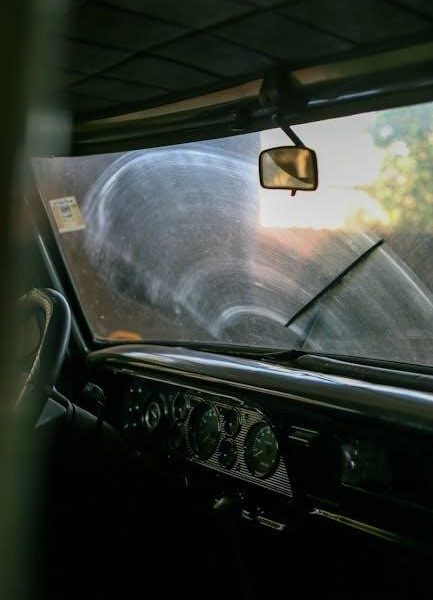Sha16/23 Manual⁚ Overview
Welcome to the comprehensive guide for your Sha16/23 Android car media player. This manual simplifies its features, covering installation, functionality, and troubleshooting. It provides essential information for optimal use, including hardware specifications and software setup. This resource is your go to guide.

The Sha16/23 Android car media player offers a modern infotainment experience for your vehicle, integrating seamlessly with your car’s system. This unit boasts a range of features, including GPS navigation, Bluetooth connectivity, and a high-definition display. Designed for user-friendliness, it incorporates both wired and wireless Carplay and Android Auto, enhancing your driving experience. The system also includes support for a rear camera, providing added safety and convenience when reversing. It ensures compatibility and ease of use, providing a modern upgrade to your car’s entertainment and navigation capabilities. This system integrates seamlessly to enhance your daily driving experiences with a high-quality user friendly interface. Its robust features are designed to meet the needs of modern drivers, bringing together entertainment, navigation, and safety in one package. With this unit, your car is transformed into a connected hub.

Hardware Specifications
The Sha16/23 unit requires a 1.8 GHz processor, 1 GB RAM, and 8 GB storage. Display needs are 3.5 inches or higher and a 2000 mAh battery is needed to operate smoothly.
Processor, RAM, Storage, and Display Requirements
For optimal performance of your Sha16/23 Android car media player, it is essential to adhere to the minimum hardware specifications. The unit requires a processor with a clock speed of 1.8 GHz or higher to ensure smooth operation and responsiveness. A minimum of 1 GB of RAM is necessary for multitasking and handling various applications without lag. Furthermore, the device should have at least 8 GB of internal storage for storing applications, maps, and media files. The display should be 3.5 inches or higher to provide a comfortable viewing experience. These specifications are vital for the device to function correctly, ensuring that you can enjoy its full range of features without any performance issues. These requirements ensure a seamless and efficient user experience while using the Sha16/23 system.
Power and Battery Specifications
The Sha16/23 Android car media player is designed to operate within specific power parameters. The device requires a 12V DC power supply, with an allowable range between 9.5V and 17.01V to ensure stable and reliable performance. It’s crucial to adhere to this voltage range to prevent any damage to the unit. The system also incorporates a grounding system that is a negative pole type. The device incorporates a battery with a minimum capacity of 2000 mAh, which provides backup power for certain operations. Proper power management is essential for the longevity and efficiency of the car media player, ensuring that it functions optimally under normal conditions. This power supply ensures consistent operation and prevents damage from voltage fluctuations, making it crucial to follow these specifications.
Installation and Wiring
Proper installation and wiring are crucial for the Sha16/23. This section guides you through connecting your rear camera and power connections. These steps will ensure that the device is correctly integrated into your vehicle.
Connecting the Rear Camera
To connect your rear camera to the Sha16/23, locate the yellow RCA cable on your camera. Insert this cable into the designated “REVERSE/BACK/REAR CAMERA” port on the back of the head unit. Ensure a secure connection to transmit the video signal effectively. The trigger wire, which is usually found near the RCA connection, is essential for activating the rear camera when your car is in reverse. This trigger wire needs to be connected to the reverse light circuit of your car. This will send a signal to the head unit to switch to the camera display when needed. If your vehicle has a complex wiring harness, consult a professional for assistance to avoid any wiring errors. The camera signal will be displayed on your screen automatically when the car is put into reverse gear. It is crucial to double-check all connections for safety.
Wiring and Power Considerations
When wiring the Sha16/23, ensure your car’s power supply falls within the allowable range of 9.5 to 17.01V DC. The system operates on a negative pole grounding system, so make sure your connections align with this. Proper grounding is crucial to avoid malfunctions or damage. Carefully connect the power wires, typically red for positive and black for ground, to the appropriate terminals in your car. If you have an older vehicle, you may have to cut into the existing wiring to connect the new head unit correctly, using terminal blocks to ensure reliable connections. Always double check that all connections are secure and well insulated before applying power. Improper wiring can result in system malfunctions or even damage to the car’s electrical system. Avoid making any wire connections with the vehicle on, and make sure that your vehicle’s battery is disconnected first.

Software and Functionality
This section details the Sha16/23’s software capabilities, including audio adjustments, Carplay, and Android Auto setup. Understand how to navigate menus, connect devices, and optimize your multimedia experience. It will also cover some troubleshooting tips.
Accessing Audio Tone Menus and Equalizer
Locating the audio tone menus and equalizer on your Sha16/23 Android car media player can sometimes be a challenge, especially if you’re new to the system. Unlike some units where these controls are readily accessible, the Sha16/23 might require a bit of exploration. Typically, you’ll find these settings within the main menu or a designated settings app. Look for icons that resemble a sound wave or equalizer bars. Once you’ve located the relevant menu, you can adjust bass, treble, and other audio parameters to your preference. Some units offer preset sound profiles, while others allow for more granular, customized settings. If you’ve previously used the tone control with horizontal sliders and it no longer appears, it might be due to a software update or a reset. In such cases, consulting the manual or online forums can provide further insights. Remember that sometimes, these features are not as straightforward as one might expect.
Carplay and Android Auto Setup
Setting up CarPlay and Android Auto on your Sha16/23 car media player is crucial for seamless smartphone integration. Generally, both wired and wireless options are available, depending on your device and the unit’s capabilities. For wired connections, use a USB cable and connect your phone to the designated USB port on the media player. The system should automatically detect your device and initiate the setup process. Wireless connections often involve enabling Bluetooth and Wi-Fi on both devices, following prompts to pair them. Ensure both your phone and the media player are updated to the latest software versions for optimal compatibility. Once connected, you’ll have access to phone calls, messaging, maps, and music streaming through your car’s display. Remember, the initial setup may require granting certain permissions, so pay attention to the on-screen prompts. If you face issues, verify your connections and check if the correct apps are installed on your phone.

Troubleshooting
This section addresses common issues like blank screens during reverse, unresponsive touchscreens, and connectivity problems. Solutions include checking wiring, software updates, and factory resets. This section aims to help you restore functionality.
Addressing Blank Screen Issues in Reverse
Encountering a blank screen when shifting into reverse is a common problem with the Sha16/23 Android car media player. This issue typically arises due to incorrect wiring of the reverse camera input or a software conflict. Begin by verifying that the yellow RCA cable from the rear camera is securely connected to the designated port on the radio unit, usually labeled ‘REVERSE/BACK/REAR CAMERA’. Additionally, confirm that the trigger wire, often located near the reverse camera input, is properly connected to the reverse light circuit of your vehicle. Faulty connections or loose wires can interrupt the signal, leading to a blank screen. If wiring appears correct, check the software settings. Some units may have a setting to enable or disable the reverse camera display; ensure this setting is properly configured. If problems persist, a factory reset of the device may resolve software-related glitches. Consult the user manual for specific instructions on how to perform a factory reset. If none of these steps resolve the issue, a hardware malfunction should be considered, and professional assistance may be required.


